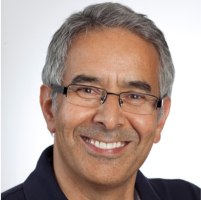Health center
Meliva MVZ Westpfalz
Anesthesia Clinic, Landstuhl
Kaiserstrasse 171 (2nd floor) 66849 Landstuhl
Anesthesia Clinic in Landstuhl
Welcome to the Meliva MVZ Westpfalz Anesthesia Clinic. Sleep is essential for the human body and helps keep us healthy. We only sleep peacefully when we feel safe and relaxed. The prospect of anesthesia causes anxiety in many people because, in addition to the medical procedure itself, they worry about the potential side effects of artificially induced sleep.
By providing personalized care, and with the help of our experienced team of anesthesia specialists, we aim to give our patients peace of mind, knowing that their sleep is in safe hands with us.
Our team: We look after your health


Range of treatments
Endotracheal anesthesia
General anesthesia
Laryngeal mask
Monitoring during treatment (perioperative stand-by)
Special pain management for patients with chronic pain
Extremities: Nerve block
General anesthesia
Mask anesthesia
Regional and local anesthesia
Twilight sedation (analgosedation) for anxious patients and unpleasant treatments
The list above is a selection of the services we offer. Please don’t hesitate to contact us if you have questions about other treatment options.
4000 patients benefit from our anesthesiological expertise each year.
We offer anesthesiological care for both outpatient and inpatient surgical and dental procedures..
Special Information
We perform anesthesia for dental and maxillofacial surgical procedures. Typical patients are children who do not want to undergo treatment because of traumatic experiences, for example, or disabled individuals who require special competent, calm, and professional care. However, even anxious patients in general, for whom necessary treatment would not be possible otherwise, can benefit from the comfort of general anesthesia.
Of course, we also perform elective anesthesia, allowing the dentist/maxillofacial surgeon to fully concentrate on the procedure. This enables optimal working conditions.
Dear patients, please note that the costs of general anesthesia in the dental and maxillofacial surgical field are usually not covered by statutory health insurance. Please inquire about this with your operator.
Helpful Information
Guidelines for Procedures Performed by Dentists and Oral Surgeons
We administer anesthesia for dental and oral surgical procedures. Typical patients include children who are resistant to treatment due, for example, to previous traumatic experiences, individuals with disabilities requiring specialized, calm, and professional care, and general patients with dental anxiety for whom essential treatment would otherwise be impossible. All can benefit from the comfort of general anesthesia.
We also provide elective anesthesia, enabling dentists and oral surgeons to fully concentrate on the procedure, ensuring optimal working conditions.
Dear patients, please note that the costs for general anesthesia in dental and oral surgical contexts are typically not covered by statutory health insurance. We encourage you to discuss this with your surgeon to explore your options and understand any associated costs.
Outpatient & Inpatient Surgeries
Many surgeries can now be performed on an outpatient basis in the practice of a licensed surgeon.
The extensive routine, experience, and long-standing collaboration between the surgeon and anesthesiologists positively impact the quality of the surgery.
Safety conditions are ensured by statutory regulations and guidelines, e.g., from the Medical Association, Association of Statutory Health Insurance Physicians, Medical Central Office for Quality Assurance (ÄZQ), Professional Association of German Surgeons (BDC), and the Professional Association for Outpatient Surgery (BAO). Quality control is executed through recognized systems like QEP (Quality and Development in Practices).
Outpatient procedures are possible in the following specialties with us:
- Otolaryngology
- Ophthalmology
- General Surgery
- Trauma Surgery
- Hand Surgery
- Foot Surgery
- Pediatric Surgery
- Vascular Surgery
- Orthopedics
- Urology
- Gynecology
Dentistry - Implantology
- Oral and Maxillofacial Surgery
- Plastic Surgery
The Outpatient Surgery
The aim of outpatient surgery is for the patient to be able to return home on the same day. Depending on the surgery and the patient’s pre-existing conditions, different anesthesia methods can be applied. The choice of method is decided by the anesthetist, surgeon, and, of course, the patient.
Benefits of Outpatient Surgery
- Surgery and anesthesia are exclusively performed by specialists with several years of professional experience.
- Highly effective and gentle anesthesia methods are employed.
- Trust among the anesthetist, surgeon, and patient is established through pre-surgery consultations.
- The patient spends the night before the surgery at home.
- Post-surgery recovery takes place in the familiar environment of your home.
Guidelines Post-Outpatient Anesthesia Please note the following for outpatient surgeries:
- Both the procedure and anesthesia will temporarily impair your reaction capacity.
- Do not participate in traffic actively and avoid working with or on dangerous machinery.
- Only take prescribed pain, sleep, or sedative medications.
- Refrain from consuming alcohol and engaging in sports.
- Avoid making important decisions (such as signing contracts).
- Ensure an adult accompanies you home.
- Home care is required on the day of surgery and the following night.
- Ensure you can be contacted by phone.
- ATTENTION Diabetics: Only take medications as directed by the anesthetist and bring them with you on the day of anesthesia.
- ATTENTION Patients on blood-thinning medications: please consult with us or your treating doctor as early as possible regarding the continuity of your medication. These rules also apply if a surgery under regional or local anesthesia has been agreed upon.
Procedure on the Day of Surgery
Please be punctual on the day of your surgery. Bring your insurance card, all operation-related documents, and anesthesia information form. After welcoming you, we’ll guide you to the changing room, where you can change and store your valuables. You will then be prepared for anesthesia and surgery in the procedure room. After the anesthesia is administered, and the surgeon begins the operation. Upon completion, we will cease the administration of anesthesia medications, and you will wake up shortly thereafter. You will spend time until your discharge in the recovery room, under continuous observation.
Pre-Anesthesia Guidelines
Preventable incidents can be avoided with your cooperation, so here are a few pre-anesthesia guidelines:
- Do not eat anything 6 hours before anesthesia (including gum, candy, etc.)!
- Do not drink anything 3 hours before anesthesia. Up to this point, you can consume clear, fat-free liquids (tea, water, coffee, but no milk or dairy products)!
- Do not smoke on the day of surgery.
- Please do not wear makeup or nail polish.
- Leave jewelry at home.
- Remove contact lenses.
- Remove dental prostheses before anesthesia begins.
- Only take medications after consulting with your anesthetist.
- Inform your anesthetist if you have deviated from the mentioned guidelines!
Anesthesia and Risks The risk associated with anesthesia is very low today. All vital functions such as breathing, heart, and circulation are continuously monitored. Our clinic adheres to the required standards and is consistently tested for functionality. All staff undergo continuous comprehensive training and participate in appropriate quality assurance measures. You’ll encounter a well-coordinated team whose routine significantly contributes to your safety. The newer, more tolerable anesthesia drugs also help to reduce side effects (nausea, drowsiness). However, there is no medical procedure without risk! Personal risk factors can be excluded through the pre-anesthesia consultation. If you have questions, concerns, or fears even just before the surgery, talk to us! We will try to dispel doubts together with you.
Types of Anesthesia
General Anesthesia
Anesthesia involves inducing a state of insensibility and inhibiting sensory perceptions. It typically involves inducing unconsciousness (hypnosis), pain elimination (analgesia), and, if necessary, muscle relaxation (relaxation) to achieve optimal surgical conditions. The choice of anesthesia method depends on the severity of the procedure, the current situation, and the condition and preferences of the patient. The anesthetist is responsible for administering the anesthesia, continuous monitoring throughout the entire anesthesia duration, and postoperative supervision.
Regional Anesthesia
In regional anesthesia, a specific region of the body is numbed using a localized anesthetic injection.
Spinal Anesthesia
Spinal anesthesia, a specialized form of regional anesthesia, is predominantly suitable for surgeries on the lower abdomen and legs. Here, a local anesthetic is injected into the lumbar spine area, spreading within the spinal fluid, thereby exerting its effect.
Axillary Plexus Anesthesia of the Arm
Axillary blockade, a technique of regional anesthesia, enables surgical procedures on the arm by blocking nerves through the injection of local anesthetics in the axillary region.
Peripheral Nerve Blocks
- Foot blocks
- Penile root blocks
Analgo-Sedation
The method of analgo-sedation is utilized when pain medications are administered alongside sedatives for a calm and painless medical experience.
Pediatric Anesthesia
Children warrant our utmost attention, encompassing both medical treatment and interpersonal relations. Throughout the entire process, we endeavor to exhibit extra care towards children and their parents, aiming to mitigate fears and concerns while fostering a sense of trust and security.
Young patients often cannot fully comprehend what is ahead of them.
Supporting the Child Throughout
Recognizing parents as a pivotal anchor for children, we actively involve them. Parents are permitted to stay with their child until they fall asleep and are also welcomed in the recovery room as the child wakes, ensuring a persistent sense of continuity and connection for the child. Nonetheless, we kindly seek your understanding that only one parent can be present during the induction and awakening phases.
Localized Anesthesia
Typically, like adults, children undergo anesthesia induction through venous administration. Should your child exhibit significant anxiety, we can, during the pre-anesthesia consultation, prescribe a patch infused with a local anesthetic. If this method proves impracticable, we facilitate sleep induction for your child using a mask method.
Post-Operative Pain Management
Much like with adult patients, we emphasize minimizing post-operative pain for our little patients to the greatest extent possible.
Ensure your child is informed and not left in the dark – engage in a dialogue with them regarding the imminent situation!
Pain Analysis and Management
Our clinic provides an array of medical services, encompassing:
Assessment and Documentation of Pain and Conditions:
- Acute and chronic back pain
- CRPS (Complex Regional Pain Syndrome), linked with central nervous system dysregulation
- Neuralgia (nerve pain)
- Various types of headaches (including cluster, stress, and migraines, which may involve facial pain)
- Neuropathic pain
- Pain from benign and malignant tumors
- Visceral pain (related to the abdomen, chest, and internal organs)
- Psychogenic and psychiatric pain
- Post-traumatic and postoperative pain
- Management of pain and side effects resulting from medication misuse
Diverse Therapies and Treatments:
- Administration of epidural, spinal, and paravertebral injections across all spinal segments (PRT)
- Execution of neurological blocks and opioid administration
- Undertaking port implantation and subsequent care
- Providing regional anesthesia and trigger-point treatments
- Implementing sympathetic and stellate ganglion blocks
- Manual therapy practices
- Jacobson’s relaxation training (muscle relaxation)
- Multimodal therapy for chronic pain
- Botox treatments for mitigating migraines and muscle pain
Recommended Synchronized Collaboration:
- Comprehensive diagnostic evaluations
- Suggested therapy recommendations
- Crafting and initiation of a therapy/treatment plan
- Regulation and moderation of opioid usage
Pain Management
Pain, a subjective sensory experience, can oscillate intensely from mild to intolerable and serves both as a signaling and alerting mechanism. Chronic pain is recognized and managed as a distinct medical condition, occasionally necessitating intricate therapeutic and diagnostic approaches.
Categories of Pain Addressed:
We manage numerous pain types, notably:
- Acute Disc Herniation
- Acute/Chronic Post-Zoster Pain (commonly, Shingles)
- Burning Feet Syndrome
- Chronic Pain associated with Fibromyalgia Syndrome
- Atypical Facial Pain, such as Trigeminal Neuralgia
- Complex Disorders of the Sympathetic Nervous System
- Complex Regional Pain Syndrome (manifesting from various external factors like trauma, surgeries, or inflammations)
- Tension-Type Headaches, Migraines, and Upper Spinal Nerve Irritation
- Radiating Neck Pain affecting Shoulders, Arms, and Occipital Region
- Thoracic Back Pain
- Cervical Back Pain
- Lumbar Back Pain (e.g., Ankylosing Spondylitis)
- Pain associated with Metabolic Diseases (e.g., Diabetes, Gout, etc.)
- Tumorous Pain
- Restless Leg Syndrome (experiencing leg pain and abnormal sensations)
- Post-Discectomy Pain
Approaches:
Various methods are available to alleviate pain. We are happy to elaborate on our extensive pain management approaches:
- Medicinal Pain Management
- Neural Therapy
- Epidural Catheter Techniques
- Sympathetic Nerve Block
- Laser Therapy
- Contemporary TENS Therapy
- Referral-based Physiotherapeutic Interventions
- Referral-based Psychological Strategies
Driving Capability Assessment:
Pain medications may influence your reactive and perceptual abilities while driving. Ensure to determine at the outset of your therapy whether you’ll require an accompanying person or driver.
Vacationing with Opioids:
Patients intending to travel with their prescription narcotics should acquire a “Customs Form” from their healthcare provider for border controls.
Will I definitely not wake up during the surgery?
During anesthesia, your anesthesiologist continuously monitors not only your vital organ functions but also the depth of the anesthesia. The anesthesiologist can control the depth of the anesthesia using medications.
Is it possible that I won't wake up after the surgery?
Anesthesia today is very safe due to modern medications and monitoring capabilities. However, life-threatening complications can occur. For healthy patients, the risk is low even in emergency interventions. The risk of complications increases with the patient’s comorbidities and the severity of the surgery. If your anesthesiologist has concerns about potential complications, they will inform you and may even advise against the surgery under certain circumstances.
Why can’t I eat or drink before surgery?
Anesthesia suppresses not only consciousness and pain perception but also protective reflexes during surgery. If the stomach is full during the induction of anesthesia, stomach contents could enter the throat and from there, potentially reach the lungs. If stomach contents enter the lungs, it can cause a severe pneumonia, which can lead to an extended hospital stay.
How Long Does It Take for Me to Fall Asleep?
Falling asleep under anesthesia takes only a few seconds and is often perceived as pleasant by most patients.
Will I experience severe pain after the surgery?
Even during the surgery, we administer pain medication to reduce post-operative pain. Should you still experience significant pain afterward, additional pain medication will be provided.
Ist es gefährlich Schmerzmittel nach der Operation einzunehmen?
Die Schmerzmitteleinnahme über einen kurzen Zeitraum nach Operationen ist eigentlich ungefährlich. Im Gegenteil können starke Schmerzen die Heilung sogar verzögern oder behindern.
Is it dangerous to take painkillers after surgery?
Taking pain medication for a short period after surgery is generally safe. On the contrary, severe pain can even delay or hinder healing.
When can I eat and drink again?
From the anesthesiology perspective, you can consume something light as soon as you are home. Please also discuss this with your surgeon.
Why do I need a companion for the journey home?
After surgery, you are neither capable of making legal decisions nor fit to navigate traffic for 24 hours. This also applies to using public transportation.
Why can't I chew gum before surgery?
Chewing gum can stimulate the production of stomach acid. As a result, the stomach fills and the risk of stomach content entering the throat and possibly the lungs during anesthesia induction increases.
Is a cold before surgery risky?
A cold can pose a risk because it may lead to a constriction of the airways during anesthesia. A decision regarding the severity of a cold can only be made after a physical examination by your anesthetist. Please immediately notify your surgeon or anesthetist if symptoms appear.
Why can't I drive after surgery?
Because you are not fit to drive for 24 hours after the operation. Therefore, driving is prohibited!
When can I smoke again?
After the completion of the wound healing, which is typically after about 2 weeks. Please discuss with your surgeon!
Why shouldn't I smoke before and after surgery?
When you smoke, carbon monoxide is produced, which binds to the red blood pigment (hemoglobin). However, hemoglobin is supposed to transport oxygen throughout the body. If part of the blood pigment is occupied with carbon monoxide, under certain circumstances, it may not be able to transport sufficient oxygen through the body. This lack of oxygen can also lead to disturbances in wound healing, potentially resulting in wound infections.
When can I go home after the outpatient procedure?
The discharge time will be determined collaboratively by your surgeon and your anesthetist, in consultation with you. You should plan for at least two hours. That’s approximately how long you will need to stay in the clinic following the operation. Once we have cleared you for discharge, you may leave the clinic provided you are accompanied by an adult companion.
Can I stay with my child during the operation?
Typically, you are allowed to stay with your child during the anesthesia induction. Once your child is asleep, you will need to leave the operating room. After the procedure and anesthesia have concluded, you may accompany your child as they wake up.

Modern technology and specialist staff
The Meliva MVZ Westpfalz Anesthesia Clinic in Landstuhl is proud to offer its patients high-quality medical care. We are committed to caring for our patients with the latest technologies and treatment methods.
Our doctors and medical assistants undergo regular training to further their knowledge and refine their skills. This ensures that our range of treatments is always fully up to date. We strive to offer our patients an excellent standard of care and promote their well-being.


